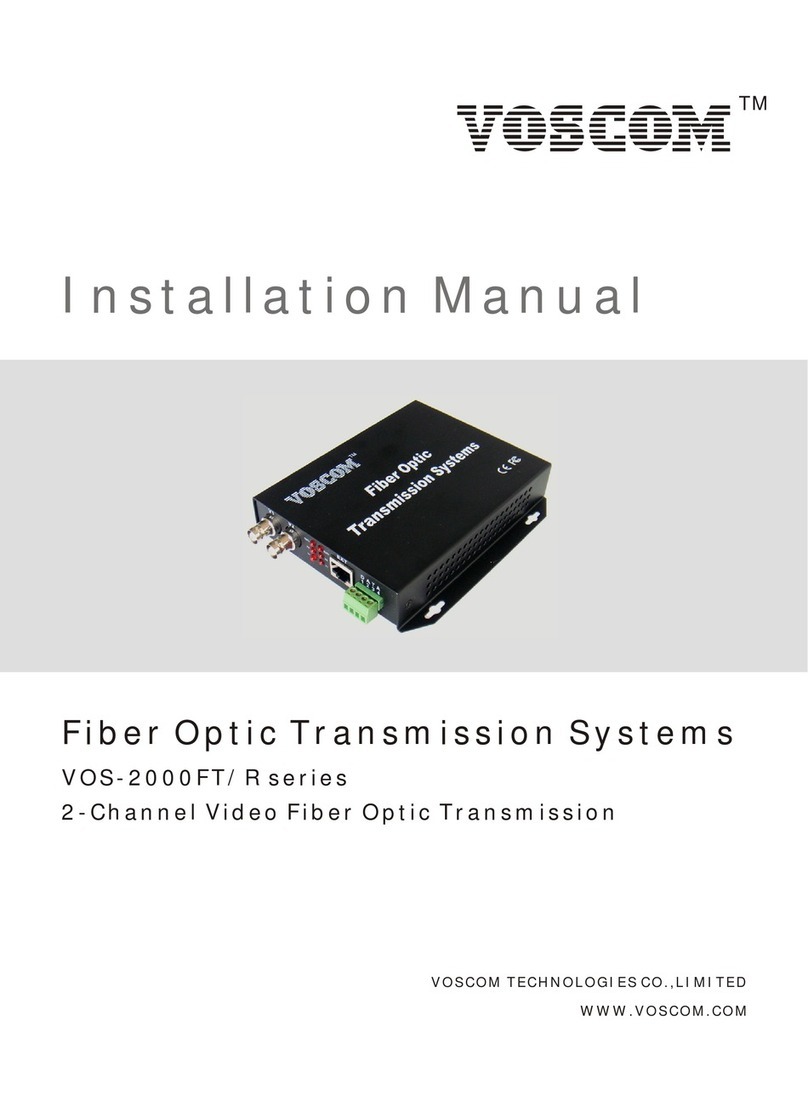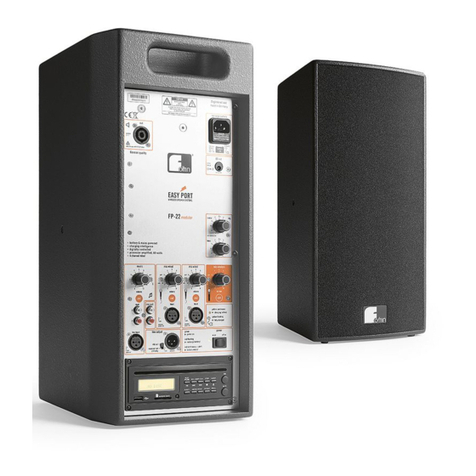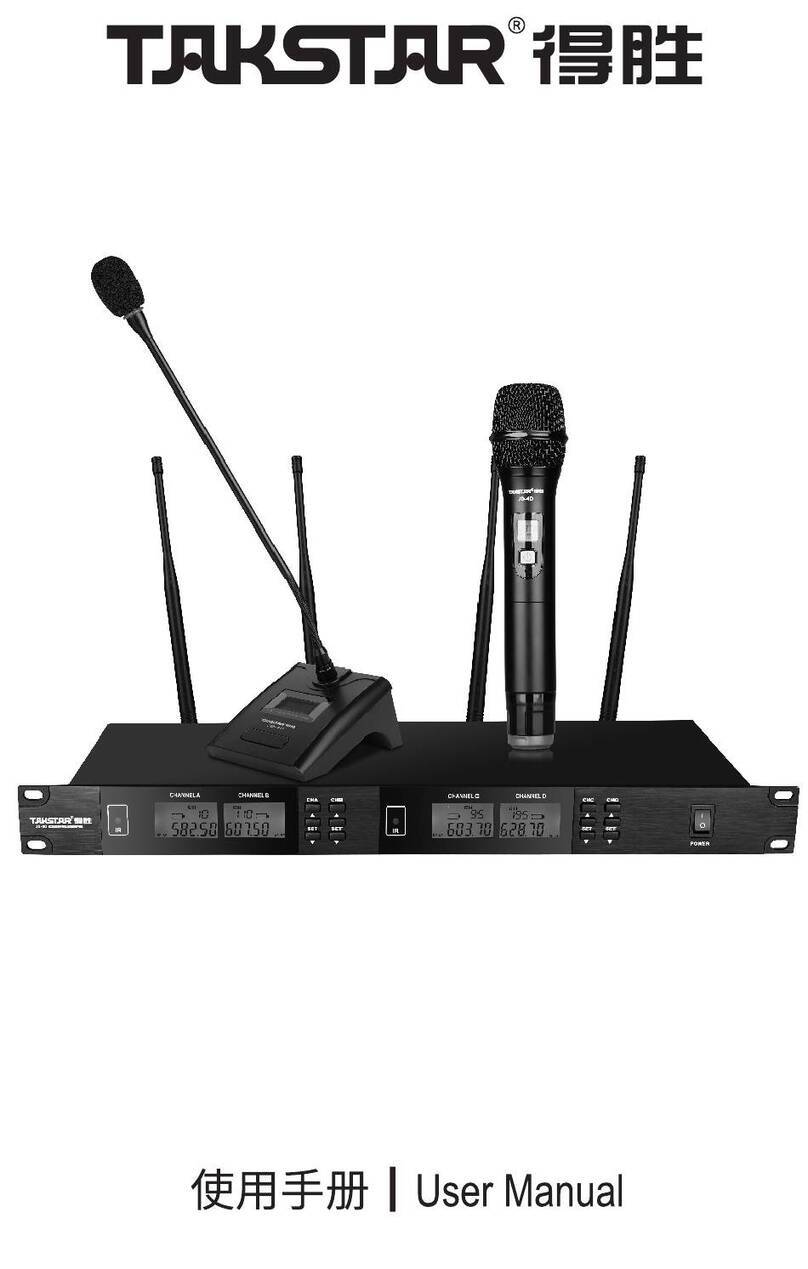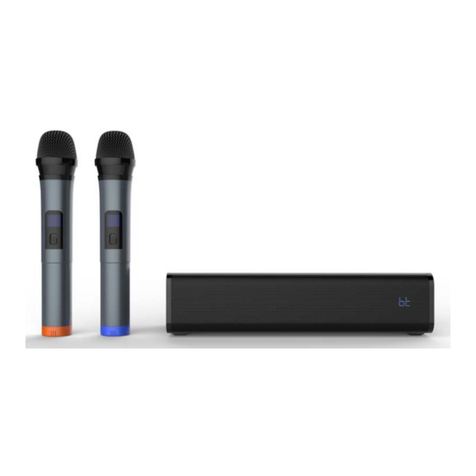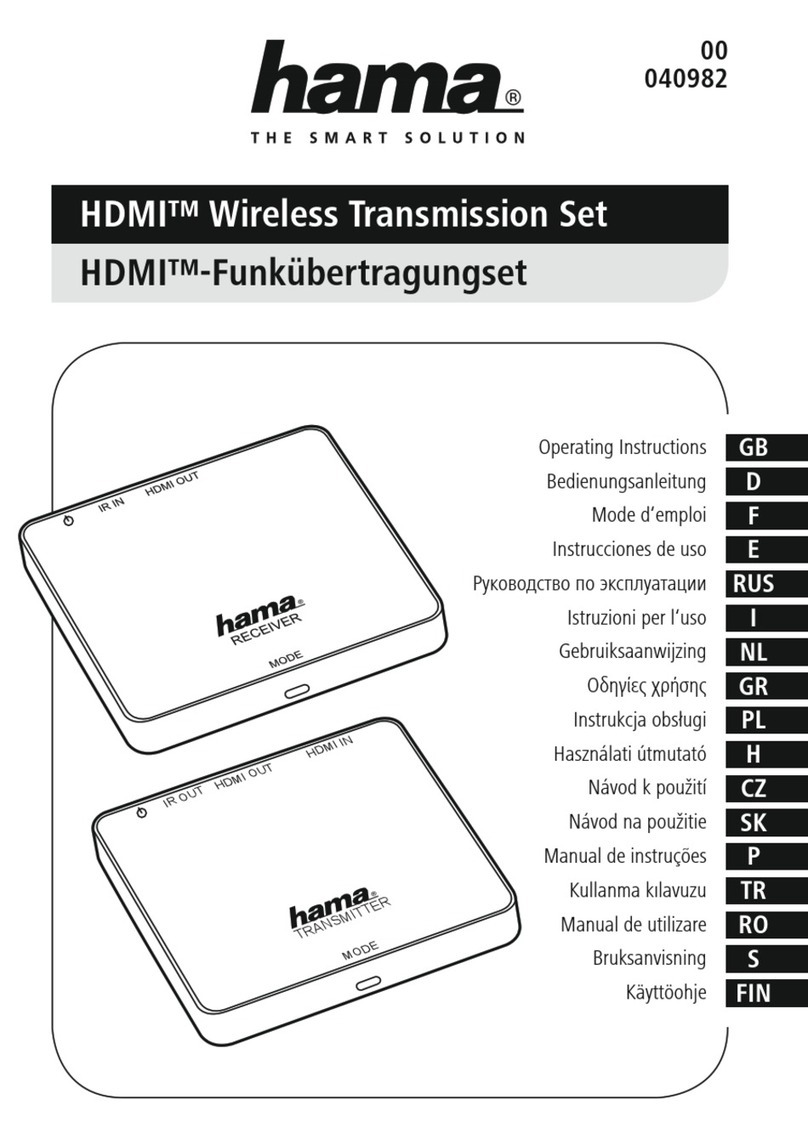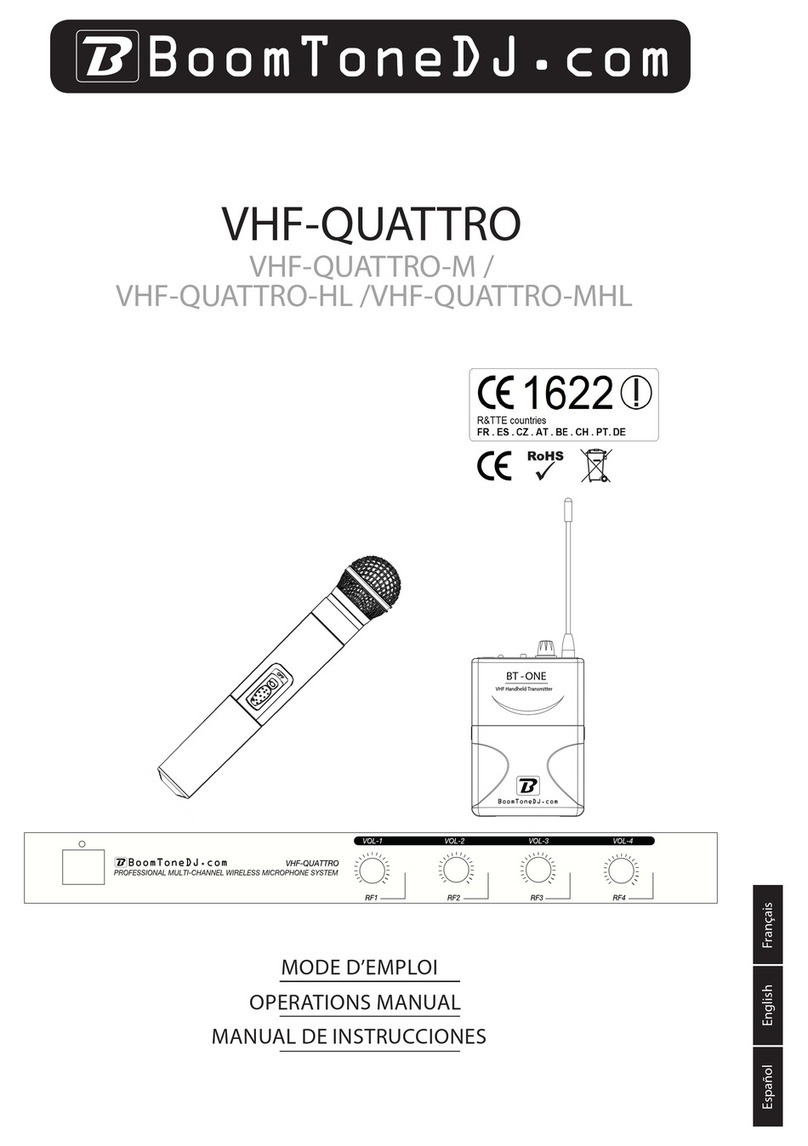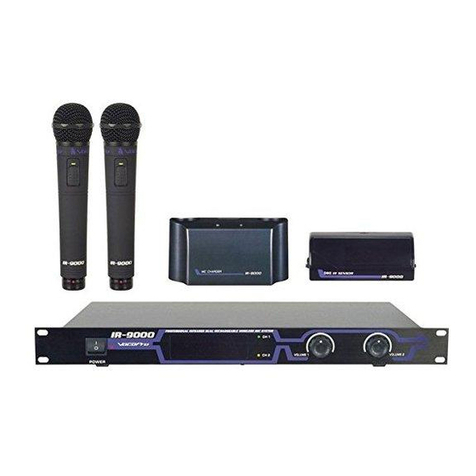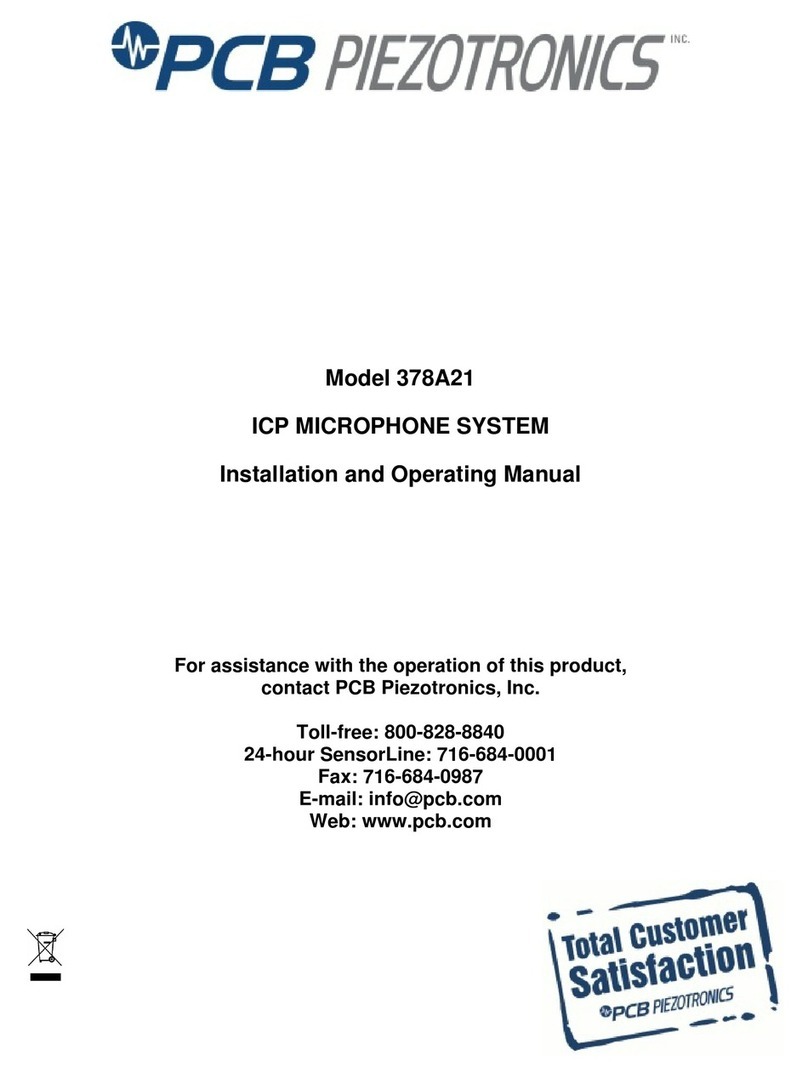Stagg SUW50 User manual

2-CHANNEL WIRELESS SYSTEM
Please read the instructions carefully before use
USER MANUAL
SUW50
CARDIOID DYNAMIC
MICROPHONE
LAVALIER CONDENSER
MICROPHONE HEADSET CONDENSER
MICROPHONE
HEADSET CONDENSER
MICROPHONE
PRE-AMP ACOUSTIC
GUITAR TRANSMITTER

MANUAL FOR STAGG SUW50
This is the user manual for the double UHF wireless true diversity Stagg SUW 50 sets with
digital audio processing.
The SUW50 SETS contain two or more transmitters which can be either a handheld
microphone, a belt-pack with lavalier, a belt-pack with headset microphone or a guitar
belt-pack with guitar cable for acoustic-electric guitar. It also contains a two-channel receiver
that must be linked to an amplier or a mixer for it to be heard.
This manual contains important safety information as well as the instructions required for the
intended use of the device. Please read it carefully before use. The SUW 50 SETS are sold in
different congurations. Some parts of this manual may not apply to the version you bought.
Please note that the design and the technical specications of the device are subject to
change without any prior notice. Check the website for updates.
GENERAL INFORMATION ON WIRELESS SYSTEMS USE
Wireless systems have one or more transmitters and the same number of receivers.
Together they become a ‘channel’. The Stagg SUW 50 has two channels. The connection
between transmitter and receiver is wireless by radio frequency (RF). The Stagg SUW
50 works in the UHF band which is known for high-quality transmission and has two xed
frequencies. You can nd these frequencies on the packaging and on the units. It is important
when you buy a second SUW 50 that the frequencies are different from your rst set.
Radio frequencies can interfere with each other, whether they are internal or external.
The choice of frequencies we offer for your country eliminates the internal interferences.
Many sophisticated features that are built into the SUW50, such as multilevel high frequency
and mid-frequency narrowband lter, multiple noise detection and control will reduce external
interferences to a minimum. Unlike most wireless systems, the SUW50 has digital sound
processing for the audio modulation (AF) and its audio compressing-expanding technology
can lower noises and increase the dynamic range. It can also lower feedback issues and
has a strong anti-jam capability.
The batteries in the transmitters have to be changed regularly to ensure smooth performance.

MARKING & CONFORMITY
• Thank you for purchasing this product. It has been thoroughly tested and has been shipped
in perfect operating condition.
• Before using the product, carefully check the packaging for damage. If the packaging is
damaged, carefully inspect the device. If anything is damaged, please contact your vendor
or call our customer support number.
• Do not open the receiver or power supply. Leave all servicing to qualied personnel.The
SMPS power supply (switched mode power supply) works between 100V AC and 240V AC.
• Make sure the mains plug corresponds to your local need.
• Only use the device in a dry location. Do not operate the device if the ambient temperature
or humidity
• is very high.
• Do not spill or splash liquids on the receiver. Should this happen, unplug the power supply.
• Unplug this unit from the wall outlet before cleaning. Do not use cleaning uids or aerosol
cleaners. Use a damp cloth.
MARKING & CONFORMITY
1. The CE mark on this product means it conforms to the EMC Directive (2014/30/EU), LVD
Directive (2014/35/EU), RED Directive (2014/53/EU) and CE marking Directive (93/68/
EEC).
2. RoHS compliant means this device conforms to the Directive (2011/65/EU) on the
restriction of the use of certain hazardous substances in electric equipments, such as
Mercury, Lead, Cadmium, Hexavalent Chromium, Polybrominated Buphenyl (PBB) and
Polybrominated Diphenyl Ethers (PBDE).
3. The Crossed-out Wheeled Bin is to draw your attention to the WEEE (Waste Electric &
Electronic Equipment) Directive (2002/96/EC). It means this apparatus must be collected
separately for recycling.
CONTROLS
The numbers 2, 3, 4 and 9 of the diagram are related to the rst xed radio frequency A which
is hereafter referred to as Channel A.
The numbers 5, 6, 7 and 8 of the diagram are related to the second xed radio frequency B
which is hereafter referred to as Channel B.

RECEIVER FRONT PANEL
RECEIVER REAR PANEL
1. POWER switch: This switch turns on/off the power of the receiver.
2. VOLUME: Controls the audio volume of the source A.
3. RF indicator LED: This LED turns on yellow when the receiver A “connects” with an emitter A,
handheld microphone or belt-pack. This means they work on the same radio frequency A.
4. AF indicator LED: This LED turns on green when the receiver A receives audio signals from
emitter A.
5. VOLUME: Controls the audio volume of the source B.
6. RF indicator LED: This LED turns on yellow when the receiver B “connects” with an emitter B,
handheld microphone or belt-pack. This means they work on the same radio frequency B.
7. AF indicator LED: This LED turns on green when the receiver B receives audio signals from
emitter B.
1
12
2
8
54
10
6
9
3
11
7
12
8. LINE OUT channel B: Unbalanced XLR line level output with audio signal from emitter B to
connect a mixer, an ampli er or powered speaker cabinet.
9. LINE OUT channel A: Unbalanced XLR line level output with audio signal from emitter A to
connect a mixer, an ampli er or powered speaker cabinet.
10.Mono Phone jack MIX out: This output mixes outputs 8 and 9.
11.DC 12-18V: Connects to the external SMPS power supply (100-250 V AC 13.5 V DC).
12.UHF antennas: For true diversity reception. They have to be set upright for best reception.

WIRELESS MICROPHONES
BELT-PACKS
13. 3-position switch: Off / Stand-by / Operational.
14. Red colour LED: Informs on the status of microphone and batteries. When switched on
“stand by”, the LED light brie y switches on. When the battery levels get low, the LED light
will be continuously on.
15. Battery compartment: Holds 2 AA batteries. Screw the lower body part off and ip the holder
downwards to get access.
To ensure long battery performance, please switch the transmitter off when you are done using it.
16. Belt-pack antenna.
17. 2-colour LED: Informs on the status of connection and batteries.
18. On/off push button.
19. Mini XLR audio input: Input for lavalier, headset microphone or guitar cable for acoustic-
electric guitar.
20. Battery compartment: Holds 2 x AA batteries.
21. Sensivity trim pot: Allows adjustment to different input levels
To ensure long battery performance, please switch the transmitter off when you are done using it.
14 13
15
16
17 18
19
21
Inside

LAVALIER PICK UP (L):
HEADSET MICROPHONE (H):
ACOUSTIC GUITAR CABLE (AG):
Phantom-powered cardioid condenser microphone. Connects to the belt-pack.
Phantom-powered cardioid condenser microphone. Connects to the belt-pack.
This special cable, phone jack to mini XLR will connect your active acoustic-electric
guitar to the belt-pack.

TECHNICAL SPECIFICATIONS
RECEIVER
Frequency Range 500-980 MHz
Audio Output Unbalanced Max output 5 dBu
Power Supply 12-18 V DC
Power Consumption 150 mA (at 13.5 V DC)
Receiver Sensitivity -90 dBm
HANDHELD MICROPHONE AND BELT-PACK TRANSMITTER
Frequency Range 500-980 MHz
RF Emitting Power 10 mW
Battery Type 2 x AA battery l.5 V
Frequency Response 50 – 20.000 Hz
Input Sensitivity 2.1 mV / Pa
Power Consumption 100 mA at 3 V
SYSTEM
T.H.D. (Overall) 0.1%
Signal to Noise 96 dB (A)
RF Frequency Range 500- 980 MHz
Bandwidth 300 kHz
Dynamic Range 90 dB (A)
Audio Sampling 24 bit / 48 kHz
Oscillation Mode PLL synthesized
Audio Delay 3 ms
Audio Encoder PT Live
Frequency Response 20-20.000 Hz
Working Distance 60 m (200 feet)

Usage:
Do not place the system in a wet environment, or in the bright sunshine or in high
temperatures. Avoid being near strong electromagnetic elds.
Please unplug the adapter of the receiver and take out the batteries from the
transmitter after use.
Cleaning:
Unplug this unit from the wall outlet before cleaning. Do not use cleaning uids or
aerosol cleaners. Use a damp cloth.
Power:
Make sure the adapter ts the voltage, and the batteries are put into the transmitter
correctly.
Maintenance:
Do not open this unit and service it by yourself. Should you encounter any problems,
please contact the local distributor or factory for servicing.
Accessories:
In order to keep this unit in perfect working condition, please use the accessories
approved by the manufacturer.
Warranty:
Do not open or modify this unit by yourself. If you do, the warranty will automatically
become null and void.
EMD Music - 12/2016 Features and Specications are subject to change without notice.
Table of contents
Popular Microphone System manuals by other brands
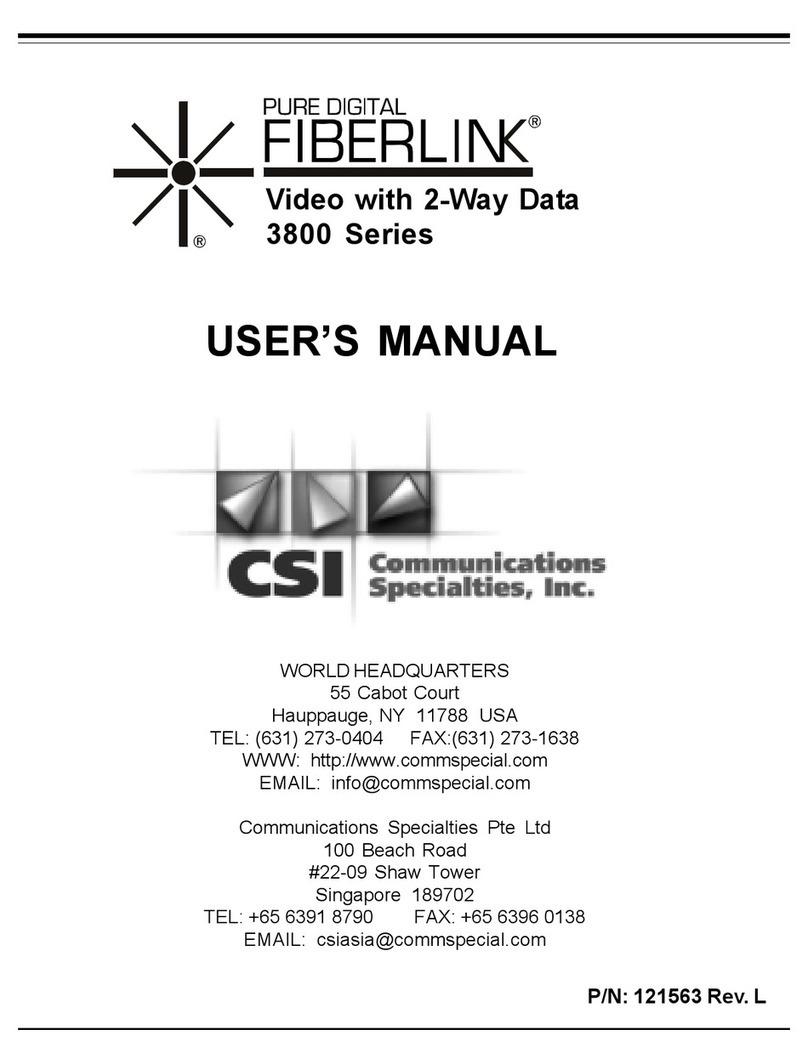
Communications Specialties
Communications Specialties Pure Digital FIBERLINK 3800 Series user manual

Wharfedale Pro
Wharfedale Pro CONTACT 800T Operating manual and user guide

Audibax
Audibax SIDNEY CONFERENCE 1000 user manual
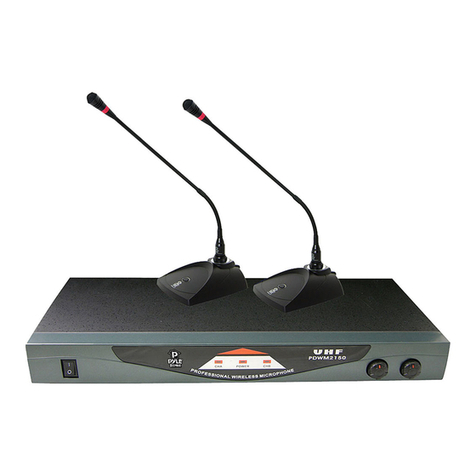
Pyle
Pyle PDWM2150 user manual

Earthworks
Earthworks FlexWand FW730 user manual

Sartorius
Sartorius YBT01, YDO01C-BT operating instructions
